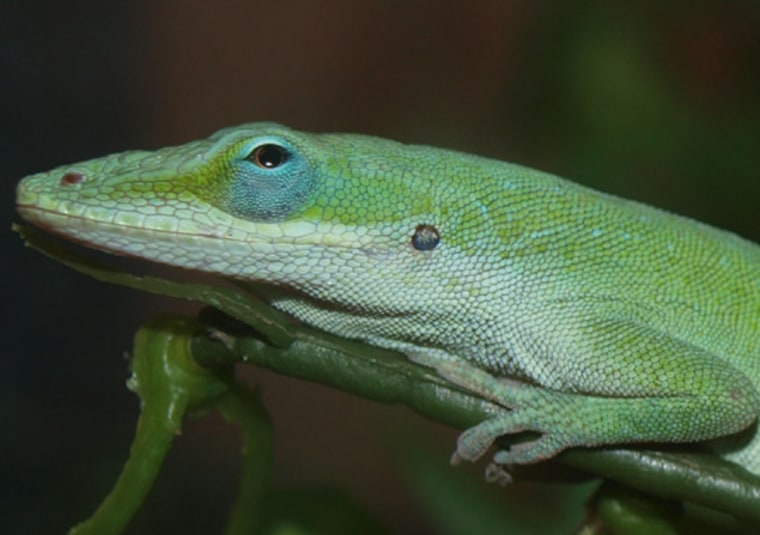The origins of hair date back 310 million to 330 million years ago to the last common ancestor of mammals, birds and lizards, according to a new study that discovered genes associated with hair production in living green anole lizards and chickens.
While lizards and chickens are not hairy, their claws contain proteins nearly identical to those found in the human hair shaft, fingernails and toenails, on the surface of the tongue and within the thymus gland.
Since the last common ancestor of mammals, birds and lizards lived before the first true dinosaurs emerged, both dinosaurs and humans appear to have inherited the genes responsible for human hair and animal claws.
In short, the structure of our hair and nails may add to the evidence that we are distantly related to dinosaurs and many other creatures, both extinct and living.
"Our hypothesis is that the common ancestor evolved claw proteins because claws were helpful in climbing," lead author Leopold Eckhart told Discovery News.
"Later in evolution, but only in mammals, the same proteins were also produced at other sites of the skin and were used to build hair."
Hair proteins in chickens, lizards and humans
Eckhart, a researcher in the Department of Dermatology at the Medical University of Vienna, and his team built their research upon prior work by the Broad Institute in Boston, which unraveled the complete genome of the green anole lizard, a popular terrarium reptile.
Comparison of the Broad Institute data with the genomes of humans and chickens — representing all birds — allowed Eckhart and his colleagues to identify hair proteins, known as hair keratin, in all three test groups: chicken, lizard and human.
Eckhart explained that the genes responsible for hair keratin production stand out from other genes due to certain unique properties. These characteristics were present in the three seemingly diverse studied animal groups.
The findings are published in this week's Proceedings of the National Academy of Sciences.
"Genes are arranged on chromosomes like pearls on a string. The arrangement of most genes has not changed during evolution. Mammalian hair keratins and the hair keratins of the lizard are flanked by the same genes," he said.
"Going back in time, the common ancestor must have had a gene at this position from which hair keratin genes of both mammals and lizards evolved," he added.
A lizardlike common ancestor?
The researchers additionally found that keratin proteins in lizards and humans contain a high content of an amino acid called cysteine. Tracing the history of this acid, the scientists found it didn't just suddenly arise by chance during mammalian evolution, but instead was inherited from the ancient common ancestor.
The particulars of this important animal relative remain unknown, but scientists can make some educated guesses.
"Probably it was more similar to a lizard than to modern mammals or birds," Eckhart said. "It is likely that this ancestor had claws, which it may have used for climbing."
The first mammal emerged sometime later, likely between 160 million and 220 million years ago. Since the researchers believe hair keratins evolved earlier than hair itself, some of the first mammals could have sported a warm, furry coat.
Genes for hair loss are also in the news, as another scientific team recently found a gene linked to human baldness that can be inherited from an individual's mother or father. Previously, yet another gene associated with hair loss was identified, but it only passes down through the maternal line.
"This (latest finding) helps to provide an explanation for the similarity between father and son," said Markus Nöthen, who led the study and is a professor at Bonn University's Institute of Human Genetics and the Life & Brain Center.
Nöthen explained that the discovery not only explains why bald fathers often produce sons who later experience hair loss, but also why men often take after their maternal grandfathers, at least in terms of hair.
Eckhart and his team are currently trying to find the mechanism that allowed mammals to use keratins of animal claws to produce hair. Such studies may not only solve mysteries about how humans and other mammals first evolved, but they might also lead to improved hair growth treatments in future.
